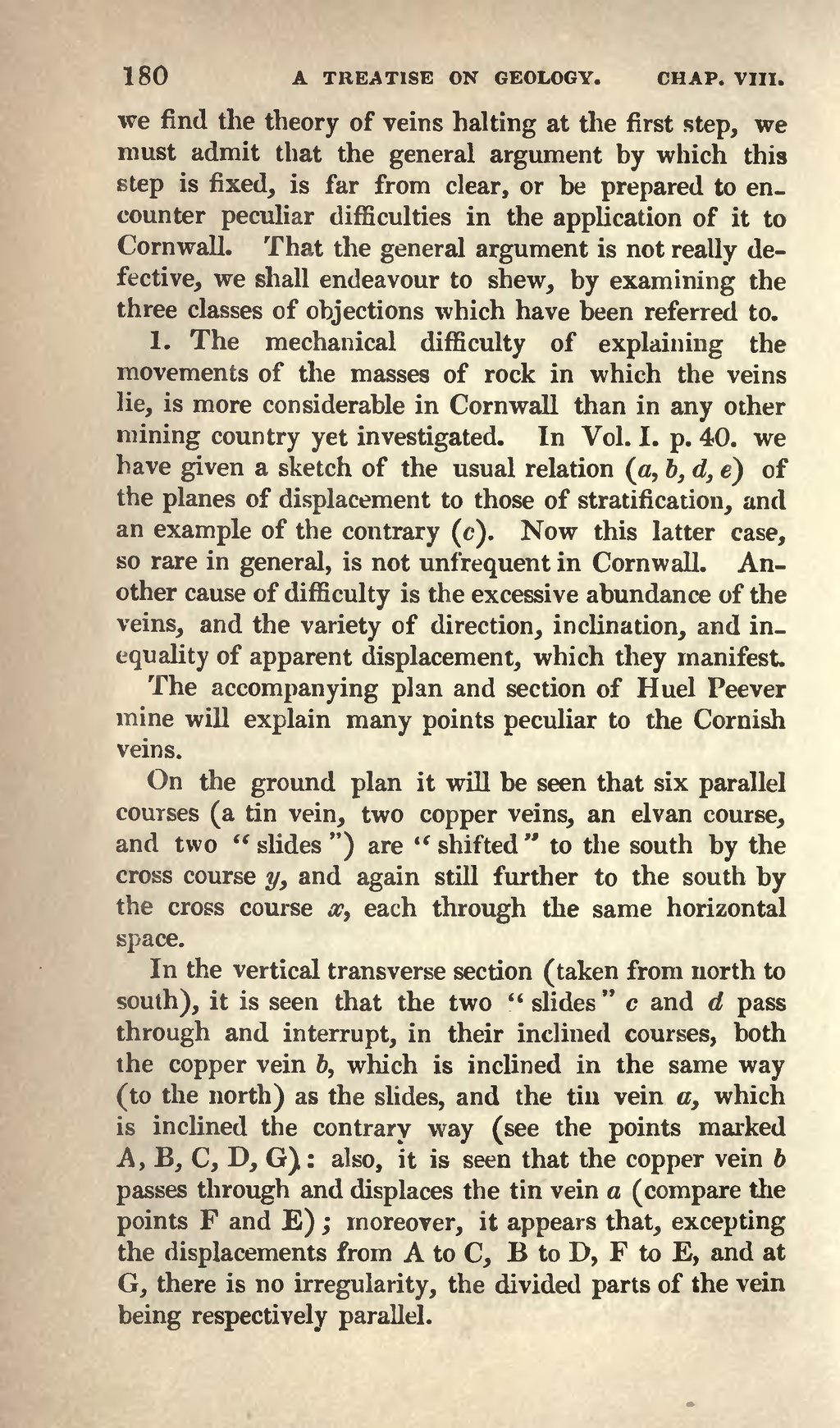we find the theory of veins halting at the first step, we must admit that the general argument by which this step is fixed, is far from clear, or be prepared to encounter peculiar difficulties in the application of it to Cornwall. That the general argument is not really defective, we shall endeavour to shew, by examining the three classes of objections which have been referred to.
1. The mechanical difficulty of explaining the movements of the masses of rock in which the veins lie, is more considerable in Cornwall than in any other mining country yet investigated. In Vol. I. p. 40. we have given a sketch of the usual relation (a, b, d, e) of the planes of displacement to those of stratification, and an example of the contrary (c). Now this latter case, so rare in general, is not infrequent in Cornwall. Another cause of difficulty is the excessive abundance of the veins, and the variety of direction, inclination, and inequality of apparent displacement, which they manifest.
The accompanying plan and section of Huel Peever mine will explain many points peculiar to the Cornish veins.
On the ground plan it will be seen that six parallel courses (a tin vein, two copper veins, an elvan course, and two "slides") are "shifted" to the south by the cross course y, and again still further to the south by the cross course x, each through the same horizontal space.
In the vertical transverse section (taken from north to south), it is seen that the two "slides" c and d pass through and interrupt, in their inclined courses, both the copper vein b, which is inclined in the same way (to the north) as the slides, and the tin vein a, which is inclined the contrary way (see the points marked A, B, C, D, G): also, it is seen that the copper vein b passes through and displaces the tin vein a (compare the points F and E); moreover, it appears that, excepting the displacements from A to C, B to D, F to E, and at G, there is no irregularity, the divided parts of the vein being respectively parallel.
